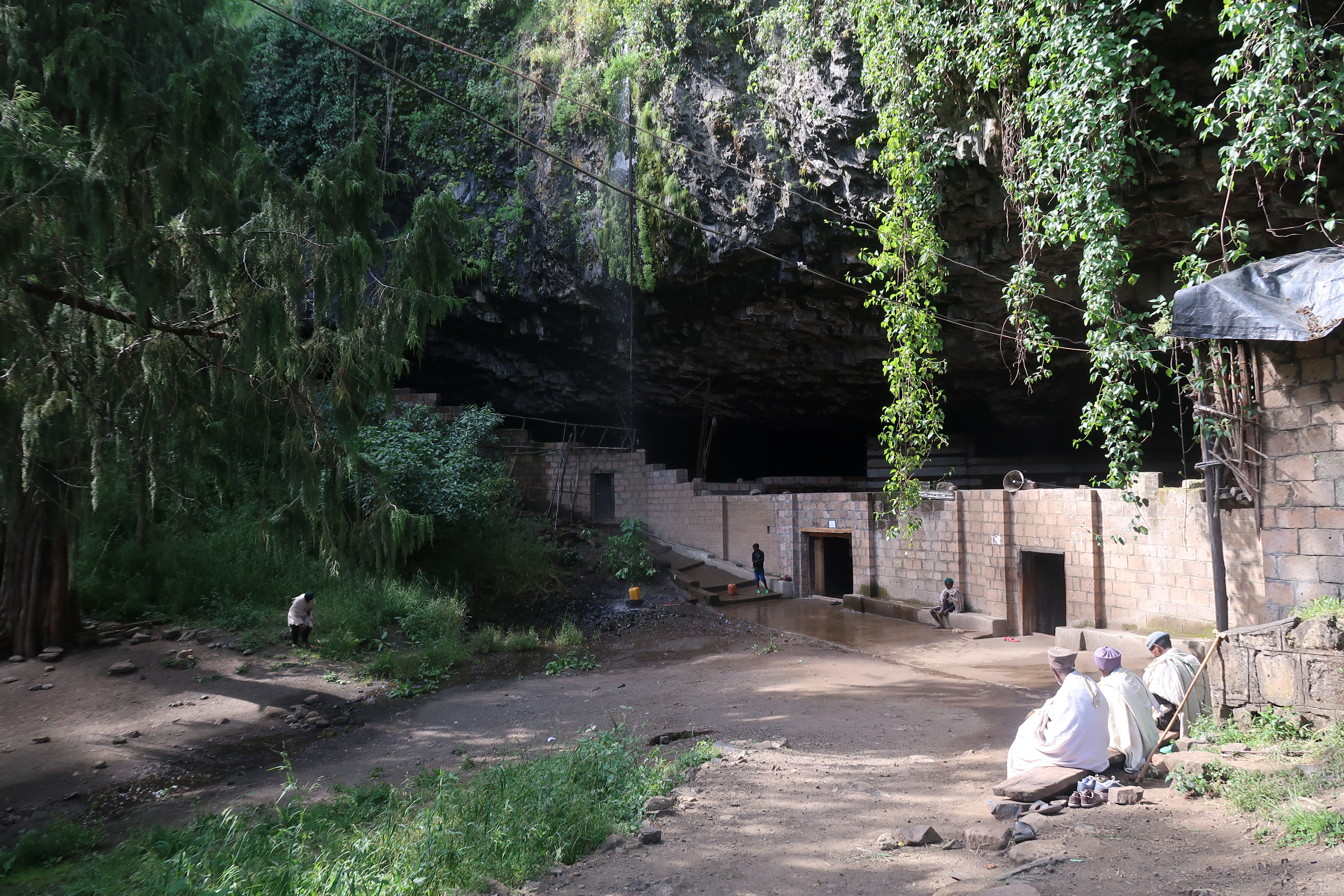There’s something intensely wonderful and spiritual about Lalibela, a truly amazing town located in the northern region of Ethiopia. This small village is a World Heritage site – acclaimed for its rock-hewn churches, stunning rural landscape, and devout Christianity. A visit to Lalibela is life-changing, leaving you with a feeling of stepping back into a culture that time forgot.
Lalibela is often referred to as the “New Jerusalem” of Africa. One of the legends is that an angel took the Emperor of Lalibela to Jerusalem to see the churches there. Struck with wonder, upon returning to Lalibela, the Emperor built his own New Jerusalem so that pilgrims wouldn’t have to make the dangerous and long journey to the true Jerusalem. No matter if the legend is true, pilgrims continue to journey to Lalibela each year where they receive the same blessings as those pilgrims who travel to Jerusalem.
World Heritage site
In 1978, the churches of Lalibela were designated as a UNESCO World Heritage site. The churches in the town are still an active place of pilgrimage and worship for the Ethiopian Christian Orthodox faith. To preserve these historic Lalibela churches, UNESCO has built protective covering for four of the churches so that they can be protected from the weather.
Getting to Lalibela
Getting to Lalibela is an easy journey, with access from the south from Addis Ababa, the capital of Ethiopia, or from Makele in the north. You can fly direct from both cities to the airport, which is 23km away from Lalibela. From the airport you can take a taxi, bus, minibus, or rent a car and driver. If you have time, you can travel by car or bus from Addis Ababa and Makele to Lalibela.
A Brief History of Lalibela

Lalibela was originally known as Roha during the reign of King Lalibela, a member of the Zagwe Dynasty who ruled in the late 12th and early 13th century. Legend has it that he was called “Lalibela” because at his birth he was surrounded by a swarm of bees. Lalibela’s mother believed the bees were a sign that he would become the emperor of Ethiopia.
Lalibela spent some time in the city of Jerusalem, where he appreciated the spirituality of the Holy Land – it’s thought that his time there inspired the construction of churches in the town named after him,
Rock-Hewn Churches
The main attraction in Lalibela is the 11 monolithic and semi-monolithic churches, which were built in the late 12th and early 13th century. Monolithic churches, also known as rock-hewn, are made from one large block of stone. The rock is carved out, creating doors and windows, columns and the roof. Unlike a semi-monolithic church, when visiting one of Lalibela’s monolithic churches you’ll be able to walk around the church at the bottom where the church has been carved.
The amazing structure of these ancient churches has been well preserved, with thousands of visitors arriving each year as tourists and pilgrims. They’re considered to be a “living heritage” rather than a museum and are still used today for worship and for other events, such as the baptism of boys 40 days after birth and girls 80 days after birth.
There’s an amazing feeling when you enter one of Lalibela’s churches. The atmosphere is peaceful and reverent, with the lingering notes of worship in the air. Visitors to these churches are reminded to be respectful of these holy places.
The churches are assembled into three groups: Northern, Eastern, and the one church in the Western region of Lalibela. The churches are within easy walking distance of each other – you’ll be able to see them all in one to two days, depending how in awe you are of their magnificence. Start with the Northern group and then make your way down to the Eastern churches, finishing with a visit to Church of Saint George in the West.
Consider hiring a licensed guide to take you on the tour – they have invaluable information about each church that you may not find in a guidebook.
Northern Churches
Biete Medhanie Alem

The House of the Redeemer of the World, this church is home to the Cross of Lalibela. Biete Medhanie is the largest of the Lalibela churches and is considered to be the largest rock-hewn church in the world. Carved from one large block of stone, the walls are a deep pink in color, which make the church stand out from the rugged landscape. Within the church are 72 columns, each symbolizing 72 disciples. It’s said that Christ touched one of the pillars of the church when he appeared to King Lalibela in one of his dreams.
Biete Golgotha Mikael
The House of Golgotha Mikael. Well known for its beautiful art, it’s believed that the tomb of King Lalibela lies here.
Biete Maryam
The Church of Mary/House of Miriam. There are two floors to this beautiful church. It’s thought that this is one of the oldest churches of the eleven. It holds a replica of the Tombs of Christ and Adam.
Biete Denagil
The Church of the Virgins, this is a smaller chapel that has a fascinating history. Still beautiful, it has less detailed engravings and pictures on its walls than other the other churches. It’s believed that the church was built to honor the 36 virgins that were martyred under Julian. The Ethiopian calendar recognizes this day as November 10th.
Biete Meskel
The House of the Cross. A beautiful church that’s been dug into the earth, is has four pillars that divide the space into two majestic aisles. Two windows, one with the motif of a cross and the other with a swastika design, allow rays of light to shine down into the chapel.
Eastern Churches
Biete Amanual
House of Immanuel, it’s believed that this church may once have been the royal chapel…and one of the most impressive. From above it only looks like a flat roof. But the interior is where the beauty lies, with a vaulted nave and a hall in which there are four well preserved three-sided pillars. On the second story of the church, reached by a rock staircase, small rock chambers are found throughout the hall. Many of the chambers are the graves of pilgrims and monks whose last wish was to be buried in Lalibela.
Biete Qeddus Mercoreus
House of Saint Mercurius and House of Mark the Evangelist. Legend has it that this church was once the former prison. There is little decoration in this church, other than a lovely mural on the lower portion of a pillar. The mural shows six saints adorned in royal clothing, each holding a cross.
Biete Abba Libanos
House of Abbot Libanos. Legend has it that this church was built in just one night by angels and Maskal Kebra, King Lalibela’s wife. This is a magnificent cave church, where a hole in the wall allows light to shine into the chapel – priests claim the light shines by its own power. The interior of the church is unique – the walls are detached, with a large pillar in the center that holds up the cave. The pillar is a symbolization of angels who are holding up the chapel from heaven.
Biete Gabriel-Rufael

House of Gabriel and Raphael, a twin church of each of the angels. The plan of the church is rather unusual. There is no holy room for Raphael, which suggests that the church may not have been intended as a church, but rather as home to the royal palace. The courtyard has a well, and stairs go down to a lower hall of pillars. There is little decoration in this church other than in the interior, where three Latin crosses are carved into the wall.
Biete Lehem
The Chapel of Bethlehem. The shrine of the church is carved into the shape of a cone, with a unique tunnel that almost spirals up the hill, ending up in small, low room. In this room, a tree trunk acts as the main pillar, truly a sight to behold.
West Church
Biete Giyorgis
Located in the southwest area of the village, away from the other churches, is the Church of Saint George. This is one of the last churches built…and perhaps the most well known. It’s often referred to as the Eighth Wonder of the World. The church has been rock-hewn into the shape of a cross.
Monasteries and Other Churches
There are several fascinating and interesting monasteries and churches situated in the area around Lalibela, all within a short distance of the town. Each has their own unique design and structure, making a visit well worth it.
Ashetam Maryam
The monastery of Ashetam Maryam can be found at the top of Abune Yosef mountain at 3150 meters, where the scenery is spectacular. Local priests believe that when they’re in this monastery, they’re closer to God and heaven than anywhere else. While the church’s treasures are interesting, it’s the view from atop the mountain that inspires people to make the climb.
Nakuto Le’Abe Monastery
A monastery that’s been built into the face of a cave, it’s said that this small church was home to King Nakuto Le’Abe after he abdicated his throne in 1270 AD. Today, the monastery holds an inspiring collection of manuscripts, icons, and ancient crosses.
Yemrehana Krestos Church
To the northeast of Lalibela you’ll find this notable church, which is older than the 11 rock hewn churches within the town area of Lalibela. The cave church is built from stone and wood, but it’s the interior that draws people to see it. The roof is decorated with geometrical designs and the sanctuary ceiling is adorned with paintings and carvings. The church is well known for the many skeletons at the back of the cave. There are over 5000 skeletons, the most recent one is believed to be from around 900 years ago. These skeletons are supposedly those of pilgrims who came to the church 1000 years ago and were buried here.
Yemrehana Krestos is still a site for pilgrims. As you visit the church you’ll see people standing under a stream of water that flows down from the mountain to the outside entrance of the church. This ritual is a form of baptism, with people being “showered” with holy water from above.
Genete Maryam
This rock church, known as the “paradise of Mary”, is only an hour away from Lalibela. Constructed from pink stonework, this rock church shines splendidly in the sun.
The Glory of Lalibela
When you’re visiting Lalibela…don’t rush. Take the time to enjoy the atmosphere of this amazing part of Ethiopia. The history, ancient culture, and spirituality of this African town are inspiring – and the sacredness of the monolithic churches will fill you with a feeling of wonder. Travelling to Lalibela is an experience of a lifetime. One that you’ll never forget.
Explore the Lalibela Churches with these Absolute Ethiopia tours:
- 16 Days Explore Semien Mountains with Lalibela
- 15 Days Discover the Historic Routes
- 12 Days Awash Danakil Depression Lalibela
- 4 Days Excursion to Lalibela
Learn more about tours and travel Ethiopa now!










